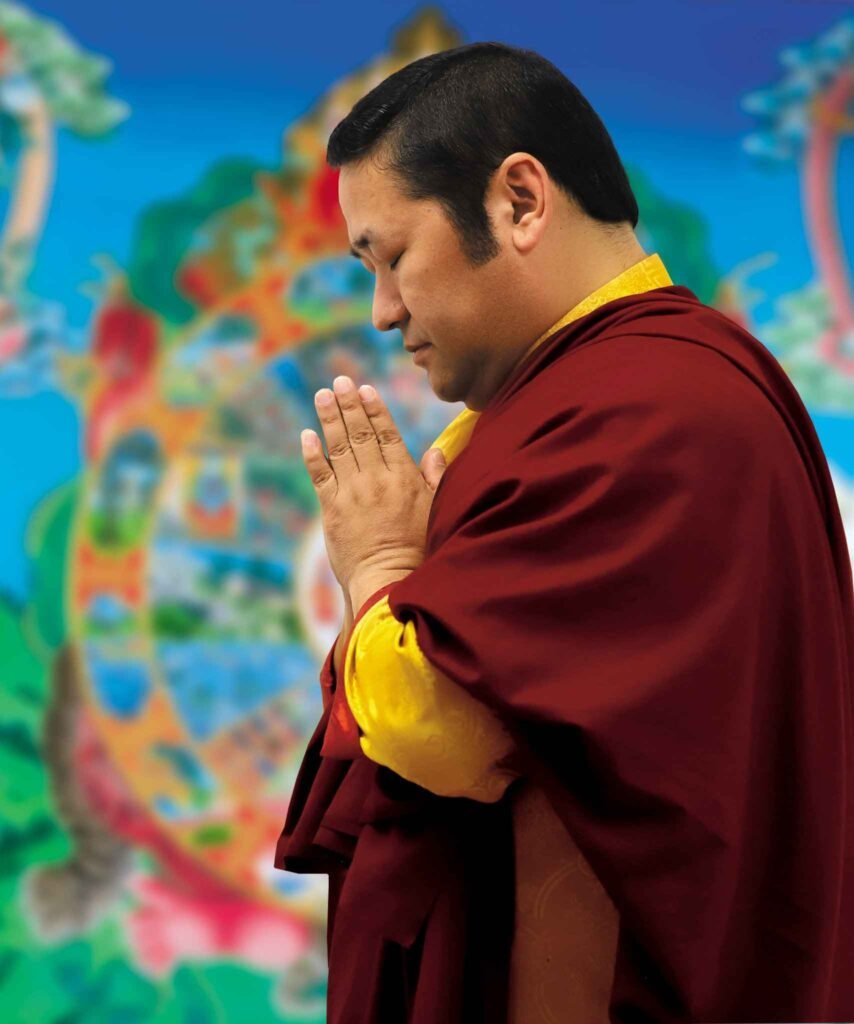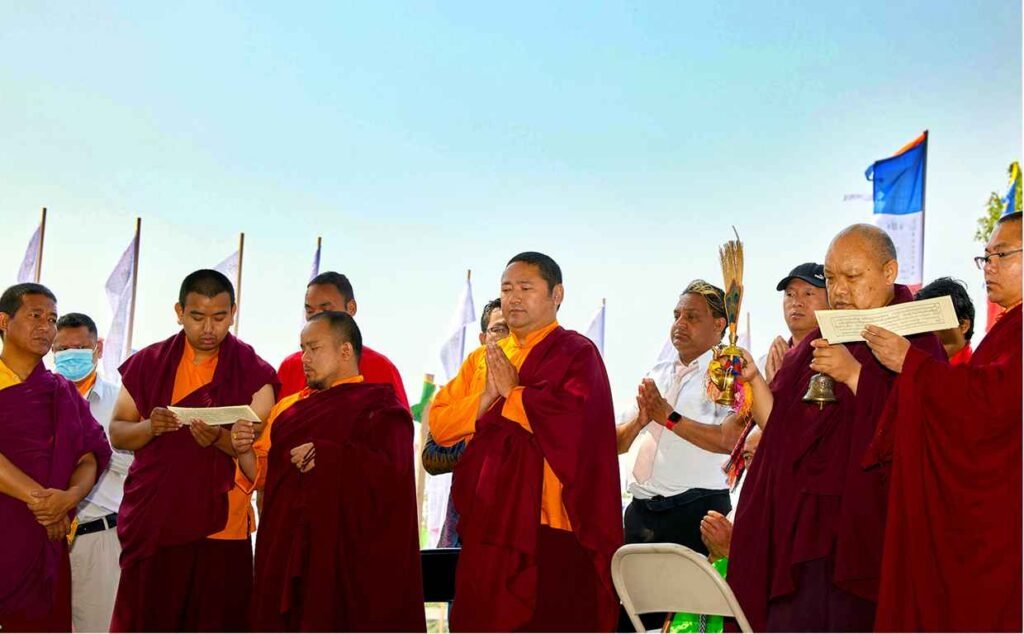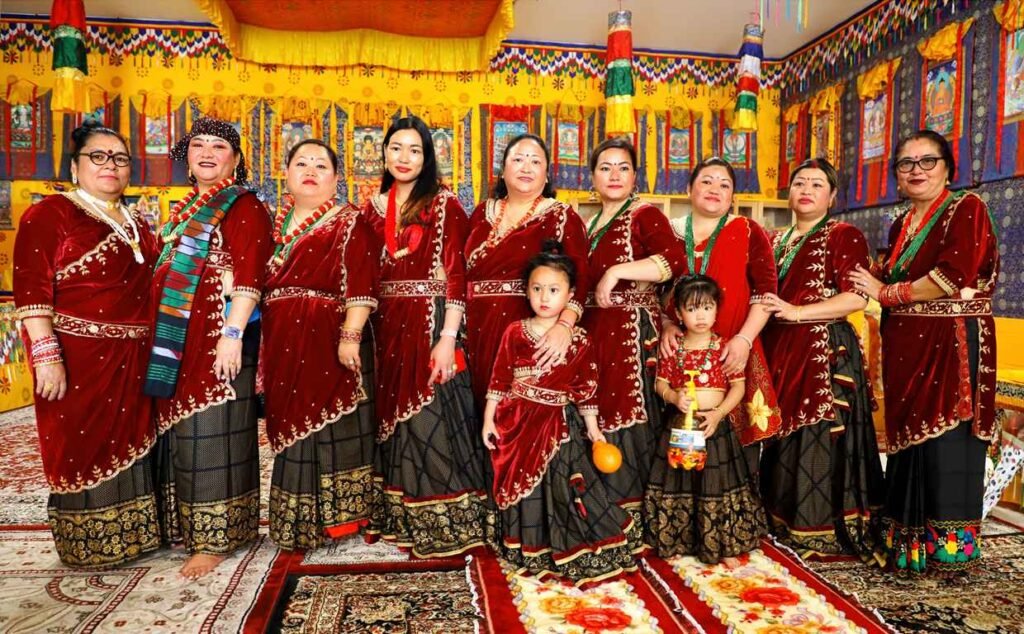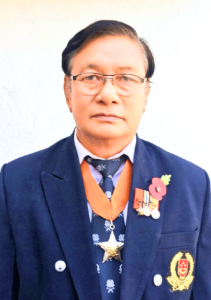Int’l Head Office : International Head Office address is 7440 Crown Point Ave, Omaha, NE 68134 || Monastery Address : 2488 County Road 45, Fort Calhoun, NE 68023, USA
Dr. Kumar Gurung
(PhD, MS, MCEC, LLB)
Totem (Kul Devataha): Gurungs worship Totems (family or clan deities), which focus on
lineage, kinship, and ancestral identity through a symbolic totem called Kul Devata. The connection to the Kul Devata is usually passed down through generations. We believe each clan’s Totem supervises, protects, prospers, and keeps the clan going as the guardian deity of the entire lineage or clan. Offerings are delivered regularly to worship the totems, particularly during important family events like weddings, births, and festivals. Totemism represents intricate social and spiritual relationships significantly influencing Gurung communities’ identity and cultural practice.
Worship of Ancestors (Pitri Devataha): Pitri Devata refers to ancestral spirits or forefathers who have passed away and are considered to have ascended to a divine status, which helps maintain social order, supports the authority of elders, and fosters conservative and traditionalist attitudes. It is essential to honor and make peace with the spirits of ancestors who have died through various rituals, including personal devotions, domestic rites, and official ancestral rites conducted by kinship. The rites of ancestor worship may include memorial services on the death anniversaries of ancestors, offerings such as food or incense, and ongoing rituals that invite the ancestors’ presence. These actions show love for ancestors and keep a spiritual link between the living and the dead. In Gurung society, honoring ancestors is very important because they believe it brings good fortune to the family.
Animism and Local Deities (Sthaniya Devata and Shaktipitt): The Gurung people also
believe in local gods and spirits, the Sthaniya Devata, believing spirits inhabit all aspects of the natural world. These gods live in mountains, rivers, and woods and watch over the people there.
People pray to these divinities and present them with offerings to get good harvests, stop natural disasters, and ensure everyone stays healthy. Gurung people are deeply connected to Animism and Shamanism by the way they act. However, Gurung Buddhists or Panchasila practitioners must base their actions on Panchasila.
Gurung Shamanism (Pachyu, Khlepree): The Gurungs are, by culture, Shamanism, a spiritual practice involving a gifted practitioner known as a shaman (Pachyu, Khlepree), who is believed to interact with the spirit world through altered states of consciousness. This interaction typically offers guidance, healing, divination, solutions to problems, or influences spiritual forces to benefit individuals or communities. They are believed to communicate with spirits, acting as intermediaries between the human and spirit worlds. In contemporary society, intellectuals favor Buddhism over Shamanism, providing more systematic philosophical content and links with the wider Buddhist community worldwide. Shamanism, however, is more unstructured and heterogeneous and is prevalent at the grassroots level. From a modern perspective, Shamanism is not considered a religion but a cultural identity of the Gurung people if they follow the path of Pancasila.



Bonism (Bonpo Lam): Bonism is an ancient Tibetan practice that originated in Tibet and is still practiced in parts of Tibet and remote Himalayan areas, such as Dolpo and nearby regions in northwestern Nepal. It was characterized by a blend of indigenous religious beliefs, folk religion, animism, and Shamanism, and its practices were primarily oral. The Bon practitioners (Bonpo Lam) in the modern Gurung community face challenges in maintaining their traditions because of the dominance of the principles of Gurung Buddhism and animal rights movements and their incompatibility with modern life. These factors contributed to the decline of pre-Buddhist Bon (Bonpo Lam) and encouraged the new Bon (Nyingma Lama), which integrated the elements of the old-school Nyingma Buddhism.
Adherence to Prime Gurung Cultural Values and Practices: The results show that the Gurung people are determined to maintain their prime cultural values and practices. Some of these values are social structure (clans and sub-clans), language (tamu kyi), life cycle rituals and their cultural segments, festivals, rodhi, music, dance, and arts, costume, respecting elders, being involved in the community (Sangha), and participating in ceremonies and customs unique to the native people. Gurungs worship ancestors, totems, animistic tradition, and shamanistic tradition as cultures based on the five precepts of Buddhism (panchasila). These are important to the Gurung because they help us maintain our unique ethnic identity. We stick to traditional cultural values in our daily lives and at community events, which shows that our culture is well-built.
Practice of Fundamental Principles of Buddhism: Buddhism is an integral part of the spiritual lives of the Gurung people. We follow the main ideas of Buddhism, such as the Panchashil, the Triratna, the Four Noble Truths, the eightfold path, the ideals of impermanence, karma, rebirth, nirvana (enlightenment), meditation, sutra, tantra, mantra, mudras, mandalas and so on. These ideas help us make moral decisions, do the right thing, and be spiritual. In the Gurung
communities, religious and cultural identities work well together because we combine our prime cultural values and practices with Buddhist philosophy. Gurung people often seek safety in the Triratna, which comprises Buddha, Dharma, and Sangha. We follow Buddha’s philosophy, live by the Dharma, and plan to take refuge with the Sangha, a group of practitioners, to get guidance and support.
Consistency with Modern Science and Technology: Gurung people can use modern science
and technology daily while still following their traditional ideals, practices, and ways of life. We are ready to improve our lives with new tools and scientific findings. Scientific advancements often lead to changes in cultural practices as society adapts to new technologies and
understandings of the world. However, we do this with a lively mix of custom and modernity: we value and protect our cultural heritage. Gurung Buddhists can reach broader participants through Zoom and social media, allowing practitioners from various regions to participate in teachings and sharing remotely.



